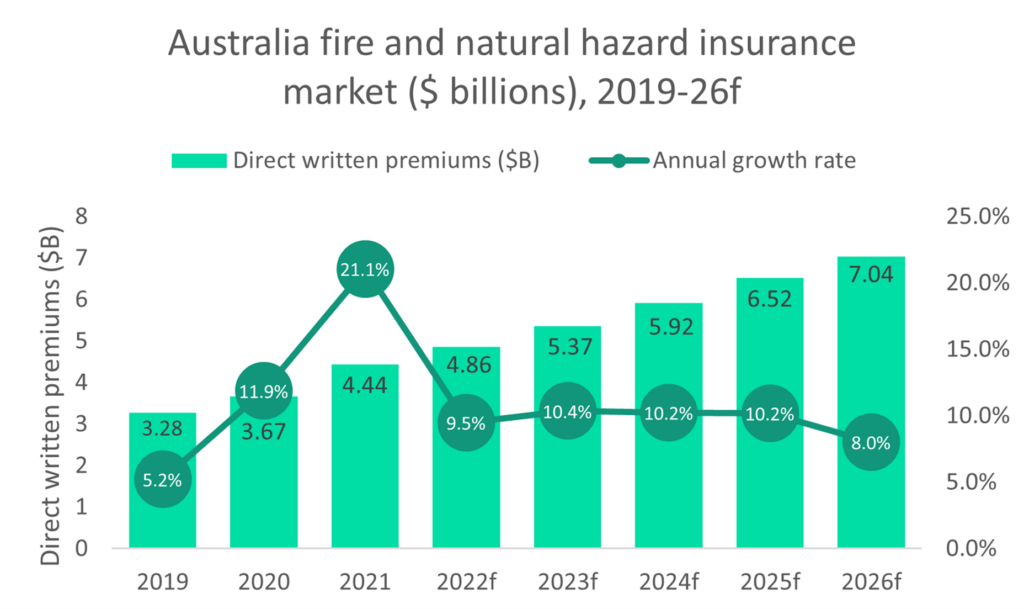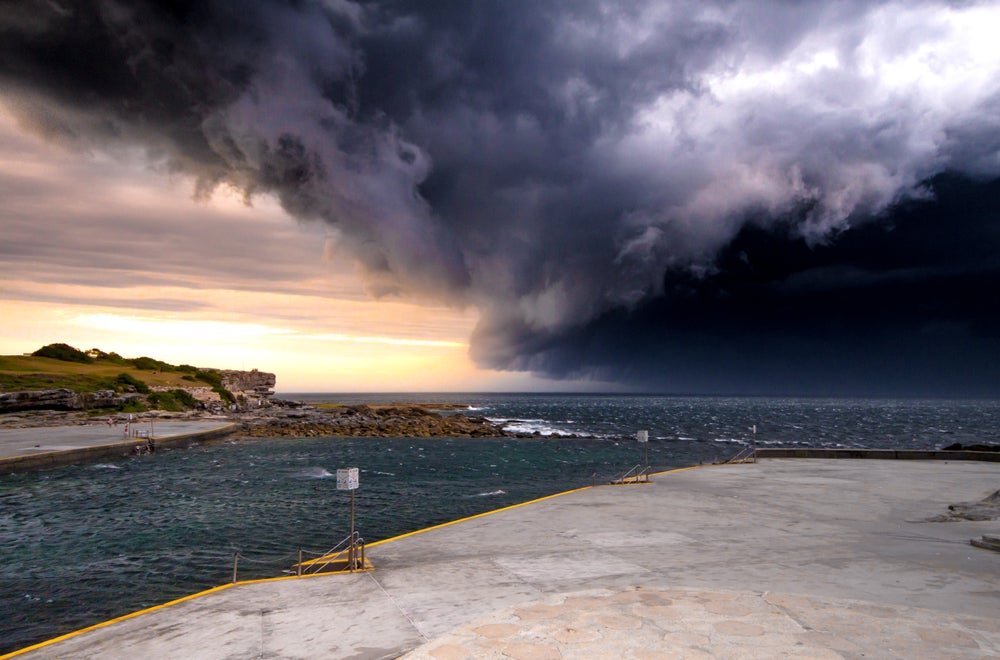Premium rates for fire and natural hazards insurance in Australia increased in 2021, with GlobalData forecasting direct written premiums (DWP) to increase by 58.6% during 2021-2026, as the effects of the country’s Cyclone Reinsurance Pool are lower than first announced. New analysis of the Cyclone Pool, predicting lower reductions in insurance premiums than the previous government promised, has been released amid the extreme rainfall and floods in Sydney, which has resulted in the evacuation of thousands.
According to GlobalData’s Global Insurance Database, DWP for fire and natural hazards in Australia grew by 17.4% in 2021, reaching $4.4 billion, despite the number of contracts only growing by 11.5%. The increase in severity and frequency of natural hazards, particularly cyclones and floods, in the country due to climate change is heavily impacting the cost of insurance premiums. GlobalData forecasts DWP in the fire and natural hazard line in Australia to increase at a compound annual growth rate of 9.7% in the 2022-26 period, reaching $7bn in 2026, a 58.6% increase from 2021. The increase in total written premiums will be accompanied by a 43.8% increase in the number of active policies in 2021-26, meaning that the increase in DWP will partially be driven by a rise in premium rates.
Climate change has resulted in an increase in natural disasters, which in turn has led to an increase in premiums for fire and natural hazards insurance in many countries. Sydney has recently been hit with heavy rainfall, resulting in more than 200mm of rain, with some areas hit by as much as 350mm. The rainfall has also resulted in Sydney’s main dam spilling on the morning of June 3, raising the risk of flash flooding.
These floods come after the recent flooding in Queensland and New South Wales (East Coast Flood) in March 2022, currently counted as the third costliest natural disaster ever recorded in Australia and the country’s costliest flood at AUD4.8bn ($3.2bn), as estimated by the Insurance Council of Australia. The high number of floods and cyclones in such quick succession is likely to further increase fire and natural hazards insurance premiums in Australia.

In order to make property insurance more affordable, in March 2020 the Morrison government passed the Treasury Laws Amendment (Cyclone and Flood Damage Reinsurance Pool) Bill, backed by an AUD10bn ($6.79bn) government guarantee. The government predicted that northern Australians would experience up to 46% reductions in premiums and strata properties up to 58%.
However, in May 2022 the Insurance Council of Australia’s analysis revealed that the expected reductions in high-risk areas are only 19% for homeowners and 15% for strata properties. Furthermore, modelling suggests that low-risk areas will continue to experience premium increases, with a predicted quarter of home policyholders seeing increases as high as 20%.
How well do you really know your competitors?
Access the most comprehensive Company Profiles on the market, powered by GlobalData. Save hours of research. Gain competitive edge.

Thank you!
Your download email will arrive shortly
Not ready to buy yet? Download a free sample
We are confident about the unique quality of our Company Profiles. However, we want you to make the most beneficial decision for your business, so we offer a free sample that you can download by submitting the below form
By GlobalData





